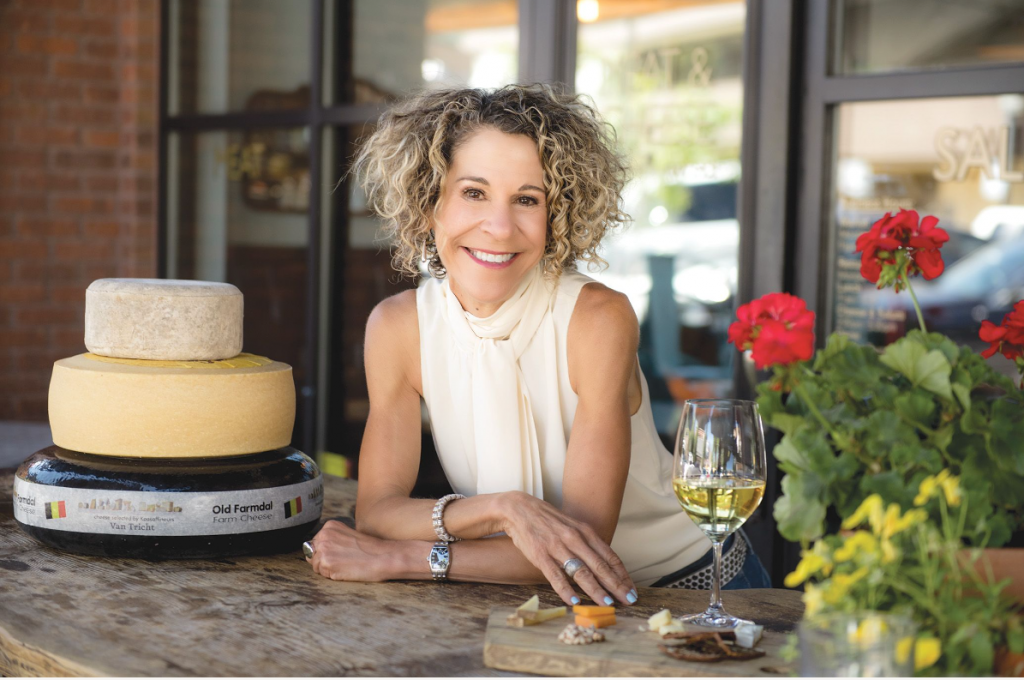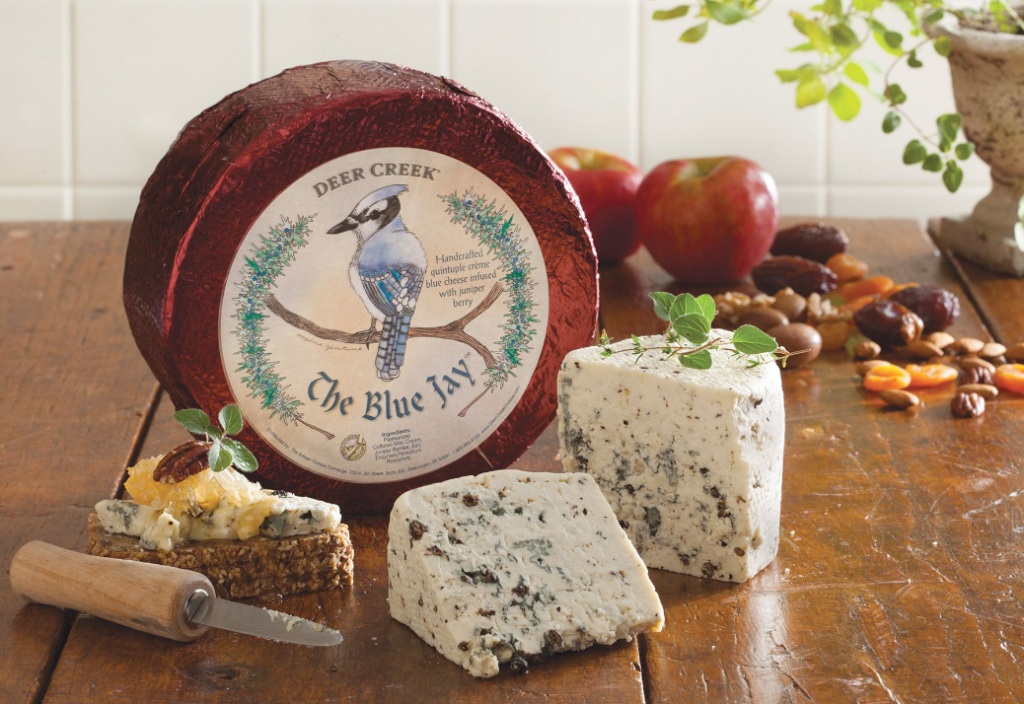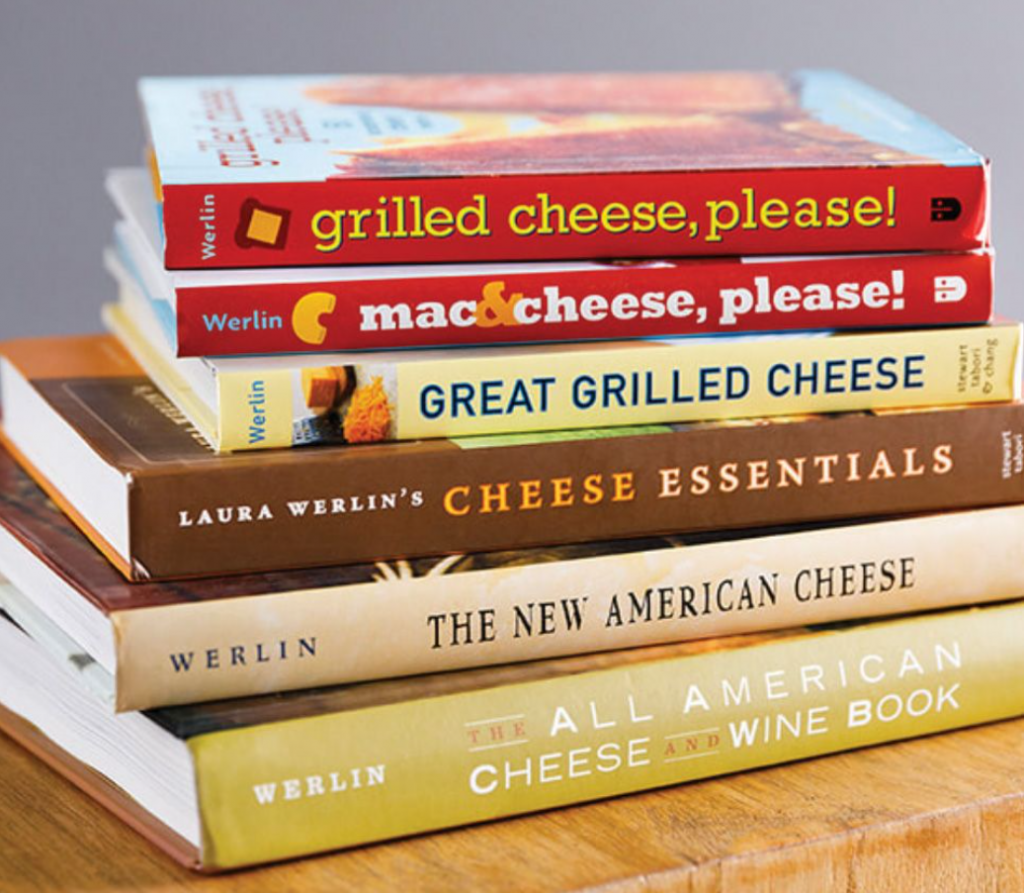
By Laura Werlin (@cheezelady)–
As the “cheezelady” (read: someone who speaks and writes on the subject), I must confess I kind of panic whenever someone asks me my favorite cheese. Do I tell them my actual favorites, some, or all of which might require a trip to a special cheese shop or online? Or do I suggest cheeses that aren’t necessarily my all-time favorites but ones that are easier to find, and equally important, to pronounce? It’s a conundrum!

Luckily for me, the Gay Gourmet has given me free rein to answer the “favorites” question in this column, and lucky you, all you need to do is refer to it until you’ve got the cheeses memorized, or better yet, in your fridge. Bonus: the Gay Gourmet himself has had one or two of these cheeses chez moi, so I’m pretty sure they have his imprimatur even in absentia.
With that, please enjoy this little romp through cheeseland with me. And in case you’re wondering, these really are my favorites. Or at least a few of them.
Comté
There is Comté and then there’s Comté (pronounced Cone-TAY). That’s because in this country, we receive this cheese as young as four months and as old as 24. While we’d just as soon think of ourselves as ageless, when it comes to this cheese, age matters. A well-aged Comté—between 14 and 24 months—is like none other. A four-to six-month-old? Uninteresting. A little background may help explain why.
Comté is made in three stages. First, the dairy owner milks the cows. Next, they bring the milk to the fruitiere, where it is turned into cheese.

Once the 80-pound wheels are crafted, they are placed on wooden shelves to drain until an affineur—the person who brings the cheese to its full expression—comes to retrieve them. During the cheeses’ stay in the aging caves—a matter of months or sometimes years—they are washed, brushed, turned, and tasted until the professional tasters (an enviable job) deem it ready for market.
The result is flavors ranging from nutty to brown butter, to beefy to roasted onion-y, to citrusy, grassy and a whole host of other flavors. The semi-firm texture helps ensure a lengthy finish. Suffice it to say that, after a taste of a particularly good Comté, you may very well look at the cheese and ask it, “Where have you been all my life?”
Teleme
Cheese lovers who’ve been in California for a few decades have seen one of the Golden State’s prized cheeses come and go. Luckily, it’s back again and better than ever. That cheese is Franklin’s Teleme, a cheese so pudgy, creamy, milky, and tangy that it’s easy to eat your way through large quantities of it without blinking an eye. That’s not a bad thing.
The Franklin in its name is Franklin Peluso, whose family started making the prized cheese in the late 1920s in Pleasanton. Although it was ultimately tweaked to serve the Italian community in the Bay Area, the original Teleme was based on a Greek cheese. The square cheese, whose rice flour-dusted rind can barely contain the bursting-at-the-seams cheese, isn’t the prettiest cheese once it’s cut; it’s messy in all its goodness. But melted in polenta, eaten atop olive oil-brushed crostini, used instead of mozzarella in a caprese salad, eaten on a sandwich—basically, any place you’d put a soft, oozy, mild cheese—Teleme is the ingredient that unquestionably levels up almost any dish.
Harbison
While we’re on the subject of creamy, anyone who’s had Jasper Hill Cellars’ Harbison usually loses their eyes in the back of their head at the mere mention of this incredible cheese. Pretty much every cheese made by Jasper Hill is genius, but they elevated the entire American cheese scene with the introduction of this cheese in 2011. Although bark-wrapped cheeses, as this one is, have been well known in Europe for over a century, it was a novel creation here. Inedible, of course, the spruce bark, which is harvested from Jasper Hill’s own property, acts as a girdle for the uber creamy cheese that’s best served with a spoon. Flavors of mustard seed, ham, mushrooms, cream, and a hint of woodsiness (that spruce!) come to the fore, but it’s the seductive texture that keeps you coming back for more. And even with those descriptors, it’s nearly impossible to convey just how good this cheese is. It is one cheese where I can say it is more than a food; it is an experience. I urge you to experience it for yourself.
Oveja Añejo

On the other side of the Atlantic, a one-year-old Spanish sheep’s milk cheese rises to the top of “best.” That’s saying a lot given this is the land of sheep’s milk cheeses (Manchego, anyone?). Oveja Añejo, which translates to “aged sheep” or in this case, sheep cheese, is made in La Rioja from a breed of sheep called Assaf (Manchego is made in Castile-La Mancha from the Manchega breed). The texture of this rustic cheese is firm, almost crumbly, and you’ll find a few of those compelling little crystals that you find in aged cheeses scattered throughout. Also compelling is its golden color, and taste of nuts, brown butter, and a hint of fruitiness that round it out. Although it’s not as easy to find as some other cheeses, this cheese is worth the search.
Deer Creek The Blue Jay
On the other end of the spectrum is this unique blue cheese from Wisconsin. Deer Creek cheese has been making award-winning cheeses, mostly cheddars, since they opened their doors in 2006. They have been innovating ever since, and this cheese is the epitome of that innovation.
For one, it is a quintuple crème blue cheese. Huh? This means that instead of a triple-crème, a category that includes local fave Cowgirl Creamery Mt. Tam and the iconic Brillat-Savarin from France, The Blue Jay has even more cream than that. How much more? I’m not sure. But since butter itself starts at about 82 percent, you can guess that this cheese comes pretty close. And yet, unlike butter, it’s both crumbly and creamy at the same time.

Probably the most unique feature of this cheese is the surprise ingredient: crushed juniper berries. Not only do these give the cheese a wonderfully crunchy texture, but also the berries lend an earthy, piney, and yet sweet flavor. Unsurprisingly, this cheese is a slam dunk with a gin martini, or even better, if you stuff your martini olives with it (I highly recommend this!), but it’s also one of the best cheeses you can put on a cheese board. Even blue cheese-averse people tend to make an exception for this cheese.
Although the stores listed here sell at least some of the cheeses, finding them can sometimes be a matter of timing. They might be in stock, and they might not. A rare cheese like Oveja Añejo admittedly will be tough to find, but Comté and Harbison are in almost all good cheese shops. Caveats aside, here are the places you’re most likely to find at least some of them. If you really want to be sure, then call ahead. And please—always taste before you buy.

Rainbow Grocery: all cheeses
https://rainbow.coop/
Cheese Plus: Comté, Teleme, Harbison, The Blue Jay
https://cheeseplus.com/
Bi-Rite Market: Comté, Teleme, HarbisonGus’s Community Market (various locations): Comté, Teleme, Harbison, The Blue Jay
https://gussmarket.com/
Little Vine (North Beach):
https://littlevine.mypreview.site/
Whole Foods (various locations): Comté, Harbison, The Blue Jay
Laura Werlin aka @cheezelady (https://tinyurl.com/34ezh46e) is a James Beard award-winning author of books on all things cheese. She gives tasting workshops at food and wine festivals around the country and for corporate events and team building. www.laurawerlin.com
Bay Times Dines
Published on April 18, 2024
Recent Comments